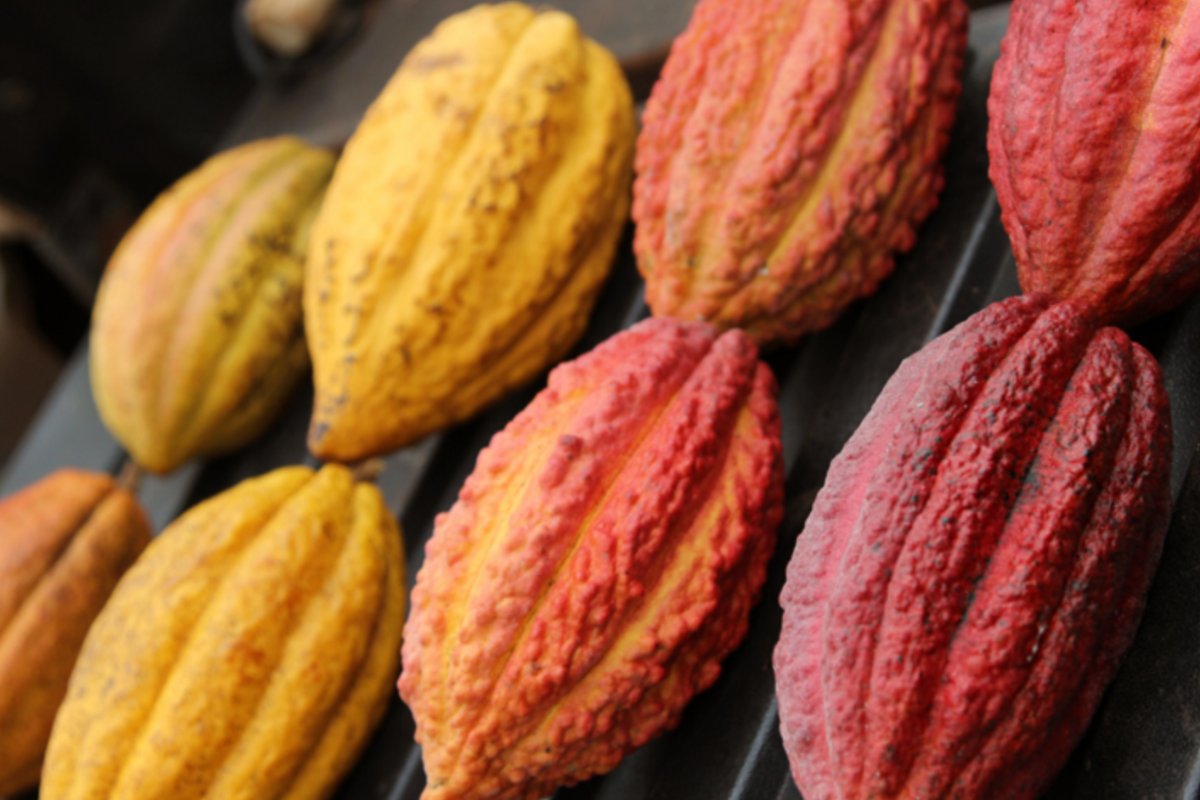What are cacao pods?
Cacao pods are the fruit of the cacao tree, which goes by the scientific names Theobroma cacao. The tree is native to Central and South America, where it is primarily cultivated in countries such as Ivory Coast, Ghana, Indonesia, Nigeria, and Brazil. Cacao pods come in different colors, including red, yellow and orange. They are oval or football-shaped and can vary in size depending on the variety of the tree.
Within each cacao pod are cacao seeds, often called cocoa beans, which are used to make chocolate. The cacao seeds are embedded in a pulpy, sweet-tasting white substance called cacao mucilage. Each pod typically contains 20 to 50 seeds.
Cacao pods play a crucial role in the production of chocolate, and the underlying flavors contribute to the many variations of chocolate products. From dark chocolate’s rich, complex flavor to milk chocolate’s creamy sweetness, it all starts with the cacao pod and its precious cocoa beans.
What cacao pod colors exist? Different Cacao Pods colors
Cacao pods come in a dazzling array of colors, and the specific color depends on the cacao tree variety and its level of ripeness. Here are some examples of cacao pod colors:
Red cacao pods are one of the most visually striking varieties. They indicate a mature stage of ripeness and are ready for harvesting. The pulp inside is sweet and flavorful, giving a preview of the taste of the cocoa beans.
Yellow cacao pods are also common, and they indicate a slightly less ripe stage than red pods. Some varieties start green and turn yellow as they ripen. The pulp inside may be less sweet, but it’s still flavorful.
Orange cacao pods are in an intermediate stage of ripeness, between green and yellow. The pulp in orange cacao pods can taste tangy with hints of sweetness.
Green cacao pods are not yet ready for harvesting, as they are unripe. The pulp inside green pods is usually more astringent and less sweet compared to ripe pods.
Purple cacao pods are rare and visually striking. The color can vary from light purple to a deep violet hue, and the pulp inside may have unique flavor notes.
Brown cacao pods continue to ripen and age on the tree, turning brown as they become overripe. At this stage, the pulp might start to ferment, affecting the flavor of the cocoa beans inside.
It’s important to note that the appearance and flavor of cacao pods can vary depending on the variety of cacao trees and growing conditions in different regions. Chocolate makers also select cacao pods at different stages of ripeness to achieve specific flavor profiles in their final products.
The colors of cacao pods are as beautiful as the cacao tree itself and contribute to the complexity and richness of chocolate flavors. Each color offers a unique taste experience, making the journey from cacao pods to delectable chocolate creations all the more exciting.
We hope you enjoyed this article. For more great recipes, check out the rest of our CocoTerra blog.
If you have any questions or comments, feel free to contact us through our social media channels. We are @cocoterra_co on Instagram and Pinterest and @cocoterraco on Twitter and Facebook.








